Are you familiar with Amsterdam Board Game Design? Amsterdam Board Game Design (or somewhat less lengthy: ABGD) is a group of international game designers and authors who meet in Amsterdam (or other cities) to work on games, or to test and provide constructive commentary on each other’s creations. If you put all these brilliant game authors together and organize so much play-by-play, one day there will be a brilliant game concept. Or several. Maybe spread over several seasons? On Kickstarter you’ll soon find three designs from three different game designers who are part of ABGD: TimeZoo, Grachtenpand and Bable and we had the opportunity to test prototypes of these games.
TimeZoo, Grachtenpand and Bable are part of ‘Amsterdam Board Game Design Season 1’ and they are designed by 3 different designers and published by Wulfhorn Games headed by Ruud Nederpelt (one of the initiators of ABGD and game designer himself). With ABGD seasons, ABGD wants to set up a platform to help beginning board game designers take their games further so that they end up in stores and get played. Therefore, it was decided to launch these first three games via Kickstarter, and as the name implies, more seasons may follow….
We will cover each card game in more detail below in this preview, but here you will also find the BGG listings;
TimeZoo: https://boardgamegeek.com/boardgame/404842/time-zoo
Bable: https://boardgamegeek.com/boardgame/404846/bable
Grachtenpand: https://boardgamegeek.com/boardgame/404845/grachtenpand
TimeZoo
We begin with a preview of the card game TimeZoo devised by Ruud Nederpelt himself. In TimeZoo, players take on the role of interns of an enigmatic professor who has invented a time machine that allows her to bring extinct animals to the present day. Of course, things go heartbreakingly wrong with this time travel fiasco and the animals end up everywhere and nowhere. It is up to the interns to lure the animals with food and with the special properties of different animals. By collecting animals, players earn points and the player with the most points is awarded as the very best intern – with hopefully a reasonable intern fee….
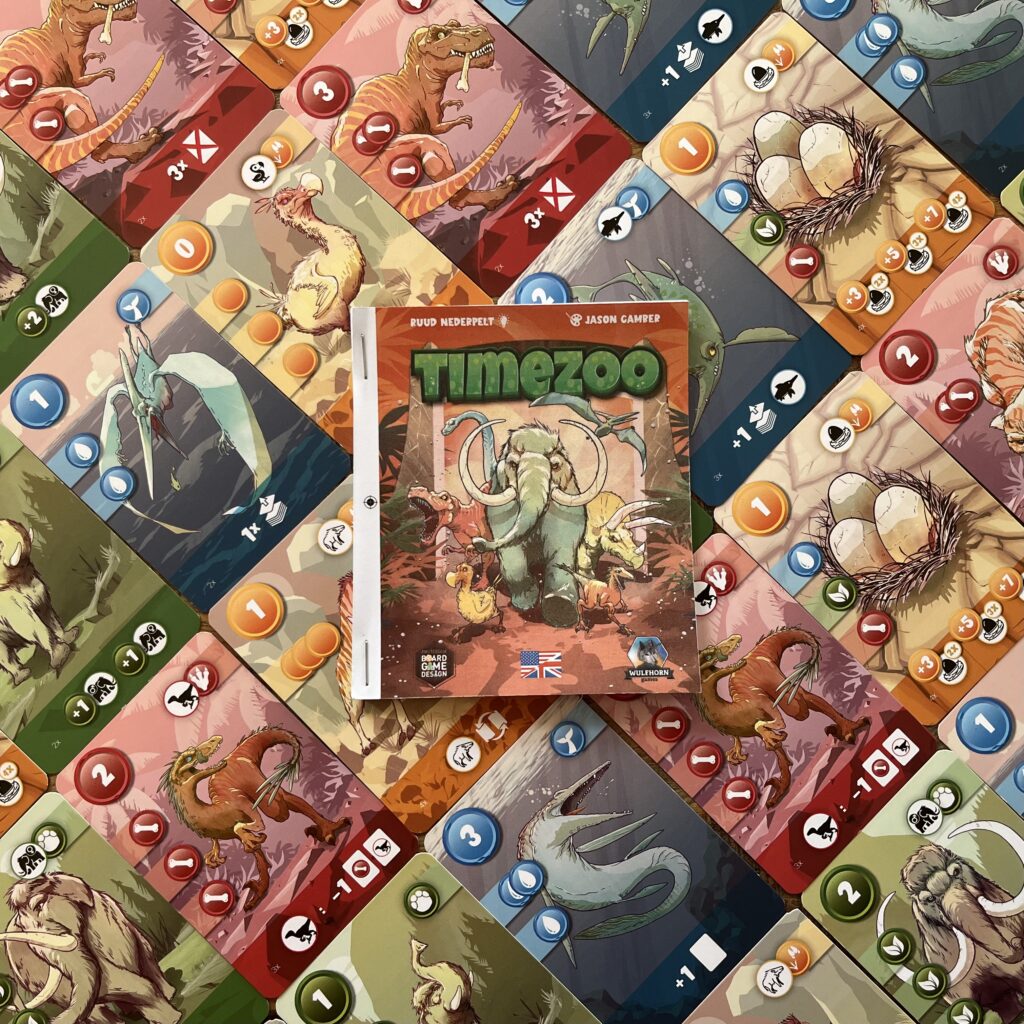
In TimeZoo, there are two stacks of cards. One contains animals and one contains food. There are always three animals open on the table. At the beginning of the game, players receive five food cards and also an internship card with a goal to gain points at the end of the game.
During your turn, you can perform a single action: take food cards or lure an animal. If you take food, you may take two cards and choose whether to take them from the draw and/or discard pile.

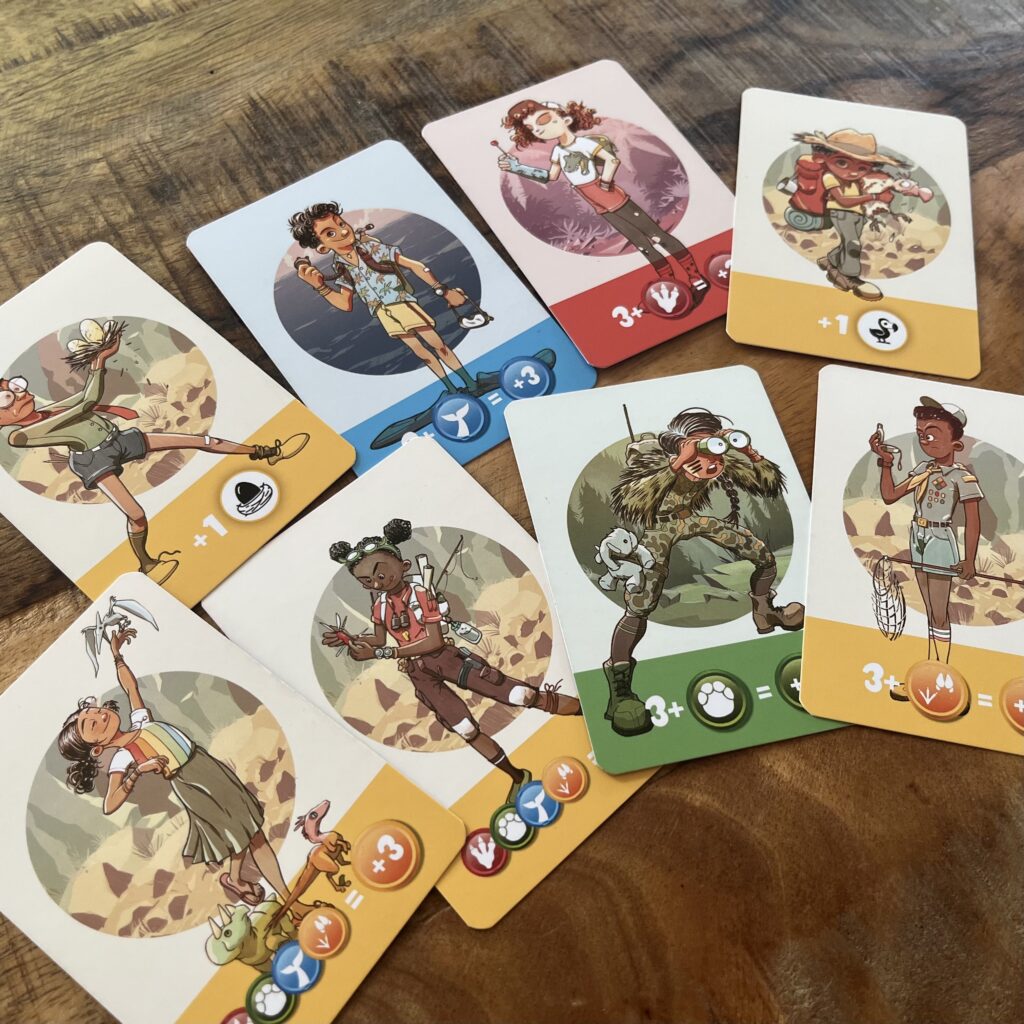
With the right food you can lure animals. There are three food groups, each divided into three types of food. Some food cards depict two snacks, but if you use this card you must choose which dinner to serve. Choices and dilemmas!
Many animals are picky and the cards depict what they like to eat. Animals provide points, but even more interesting during the game: some animals provide special properties or actions. By applying special actions you can (take) extra food, collect points, swap animals and more.
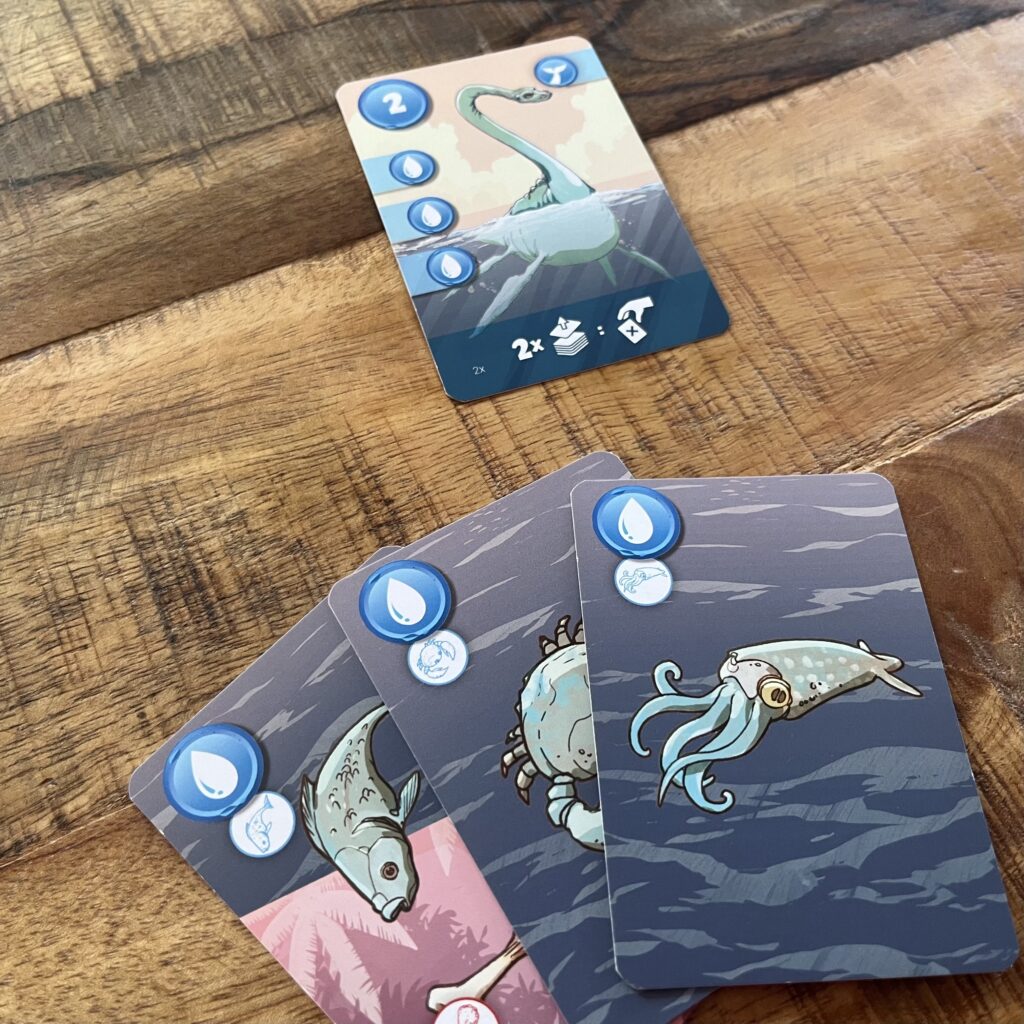
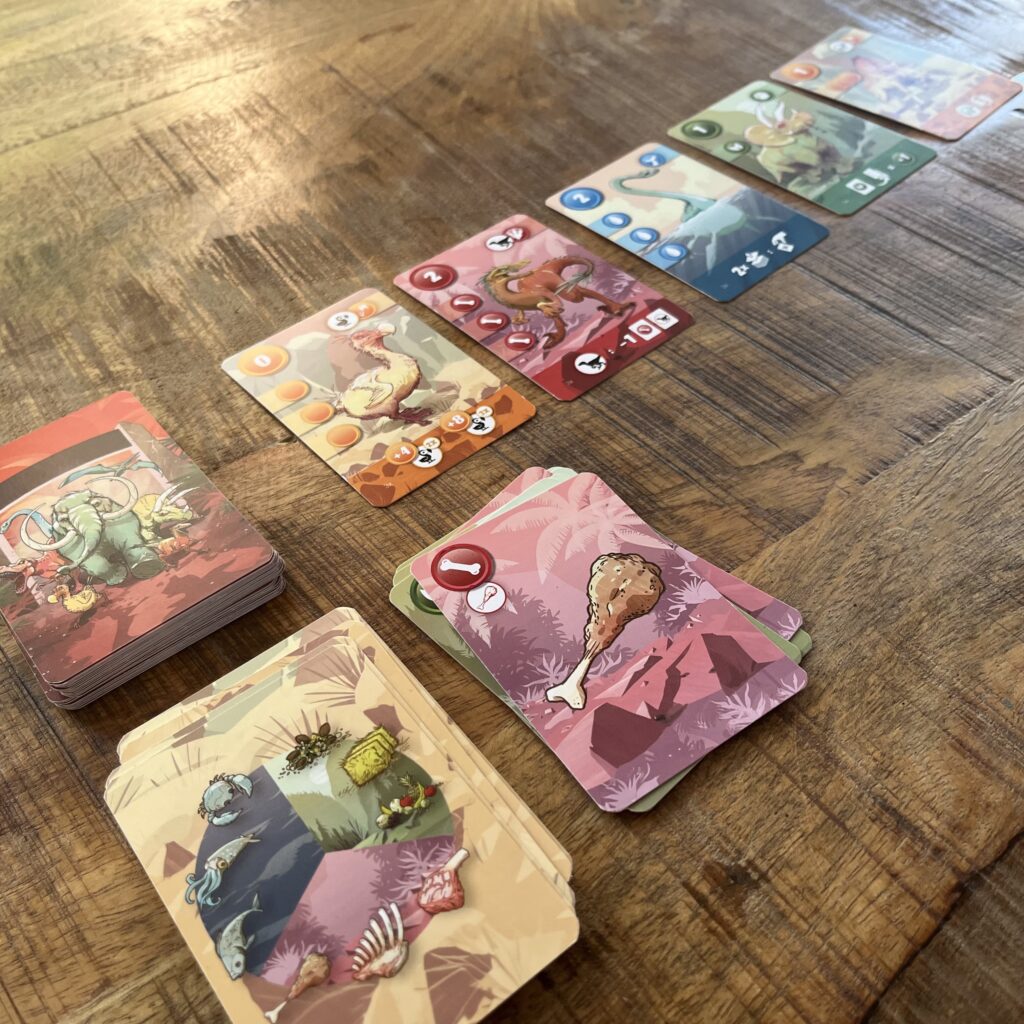
TimeZoo is beautifully designed and the game play is intuitive, somewhat familiar, yet surprising. The game is basically a fairly simple game where players collect cards to earn points, but because some animals yield certain actions, you are faced with interesting choices and sometimes start collecting actions rather than points. A little bit of set collecting and a little bit of engine building, but mainly a smooth and entertaining card game.
Grachtenpand
Canal houses (grachtenpanden) in Amsterdam are priceless, which is why I moved back to the east of the Netherlands. In the first season of ABGD games, of course, a game about these Amsterdam houses could not be left out.

In this game, there are three decks consisting of different cards. First floor, floors and roofs.Each round, players take a card from a pile of their choice. After this, they either play a card from their hand open in front of them to work on their buildings or throw the chosen card into the channel (not literally) and then pass around their remaining hand cards. This is not a game in which drafting is only done when players’ hands are empty, but this is a kind of continuous circle of cards being replenished and passed around. With first floors players start a new building, with floors they add new elements to their buildings, and with a roof they top off a building. How many points players receive for a building depends on the ground constitution, the roof and what elements are placed on the floors. Players must therefore assemble their buildings correctly, while keeping an eye on other players, because possibly one of the other players will end the game before you are ready for this….
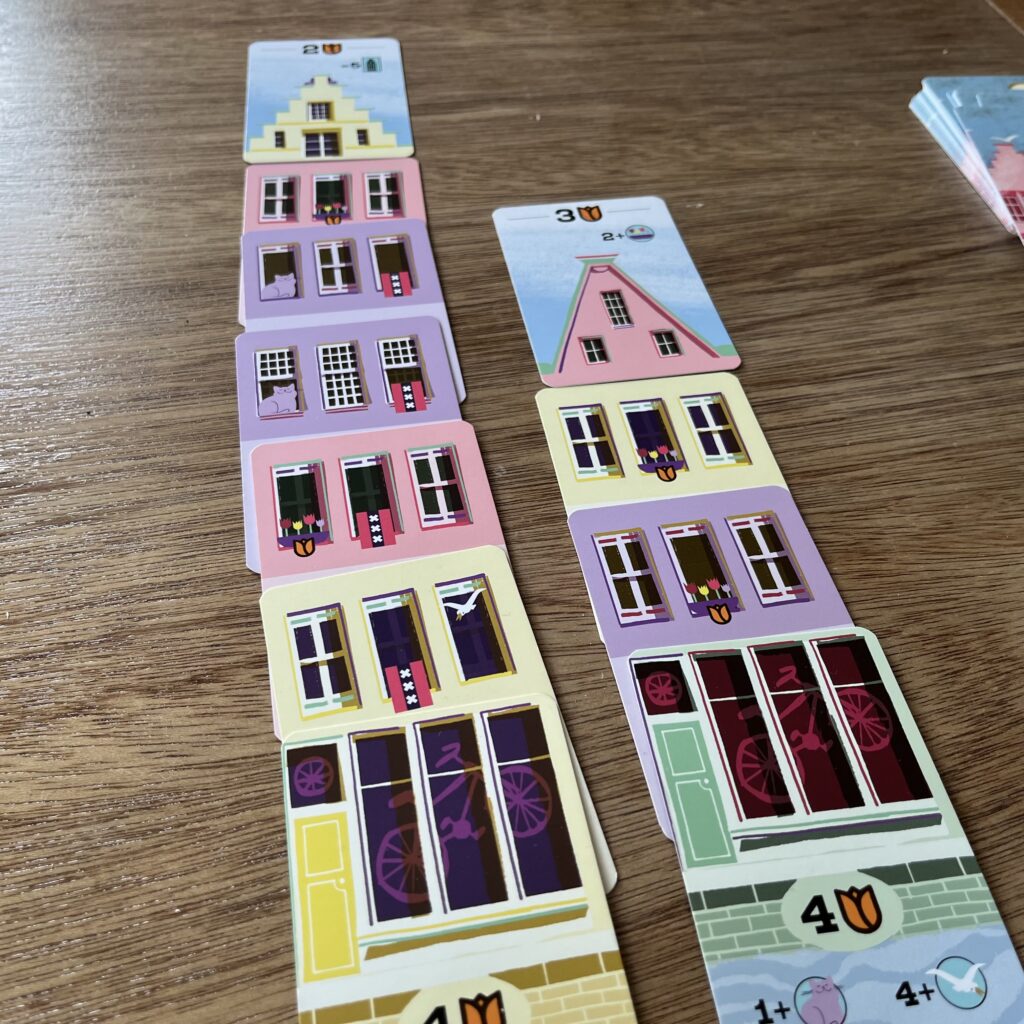
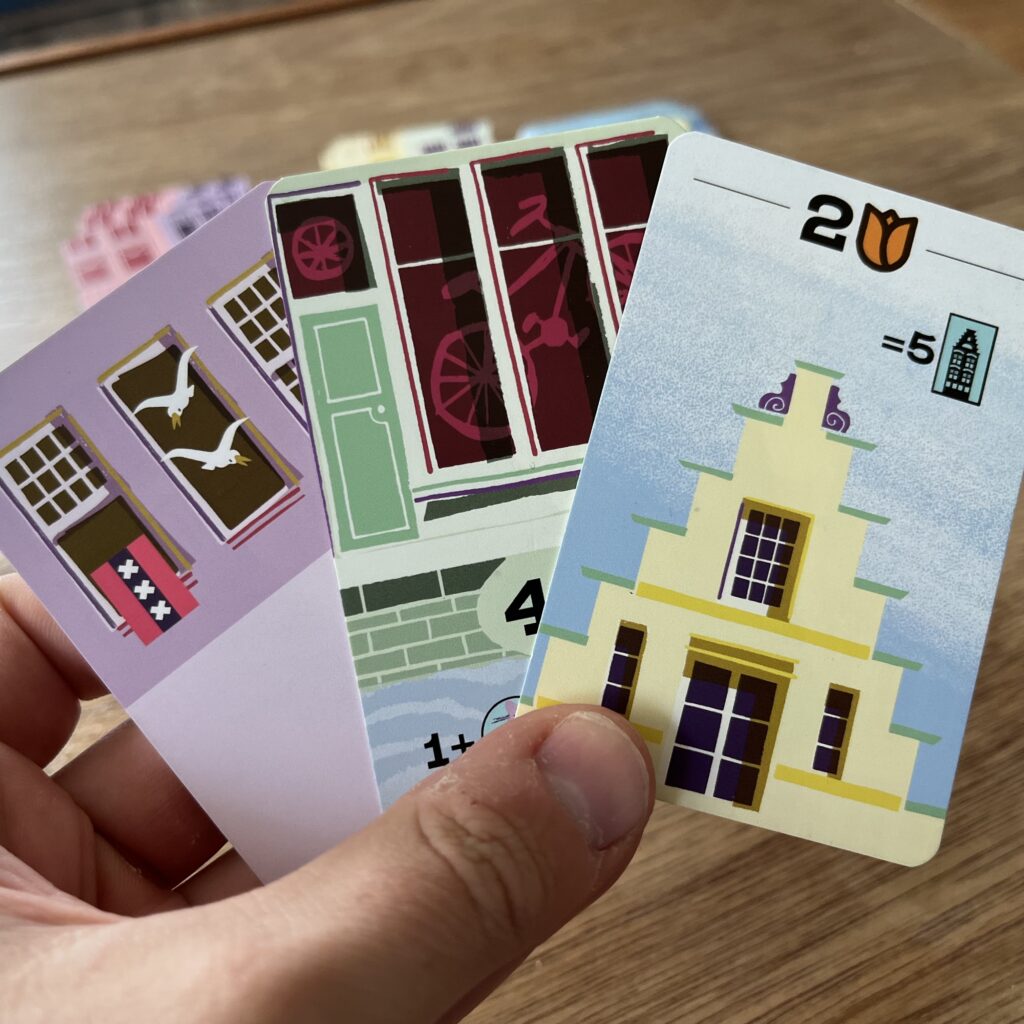

Where the real estate market is sometimes a race to the bottom, Grachtenpamd is a race to the top. While you are tinkering nicely with your canal houses, your neighbor may decide to lock up the housing market like a bubble ready to burst. This is because the game will end when a player has placed four roofs on their properties. This is followed by the scoring phase. Players play the game simultaneously, which makes the game progress extremely smooth and also basically has no downtime. The way players earn points is not an unfamiliar mechanism, but the drafting mechanism combined with the possiiblity of players to end the game prematurely for others, surely makes Grachtenpand stand like a solid house.
Bable
We conclude with Bable: a cooperative and thematic card game based on Tower of Babel. Players work together to build a tower, but are allowed only limited communication in the process.
Each player starts the game with a number of words (word cards). Words and buildings are so-called idea cards. In addition to a word, word cards also contain a specific action depicted with a symbol. Players must build a tower during the game and must finish each floor of the tower before the corresponding deck of cards of this floor is empty, because if that happens they have collectively lost.
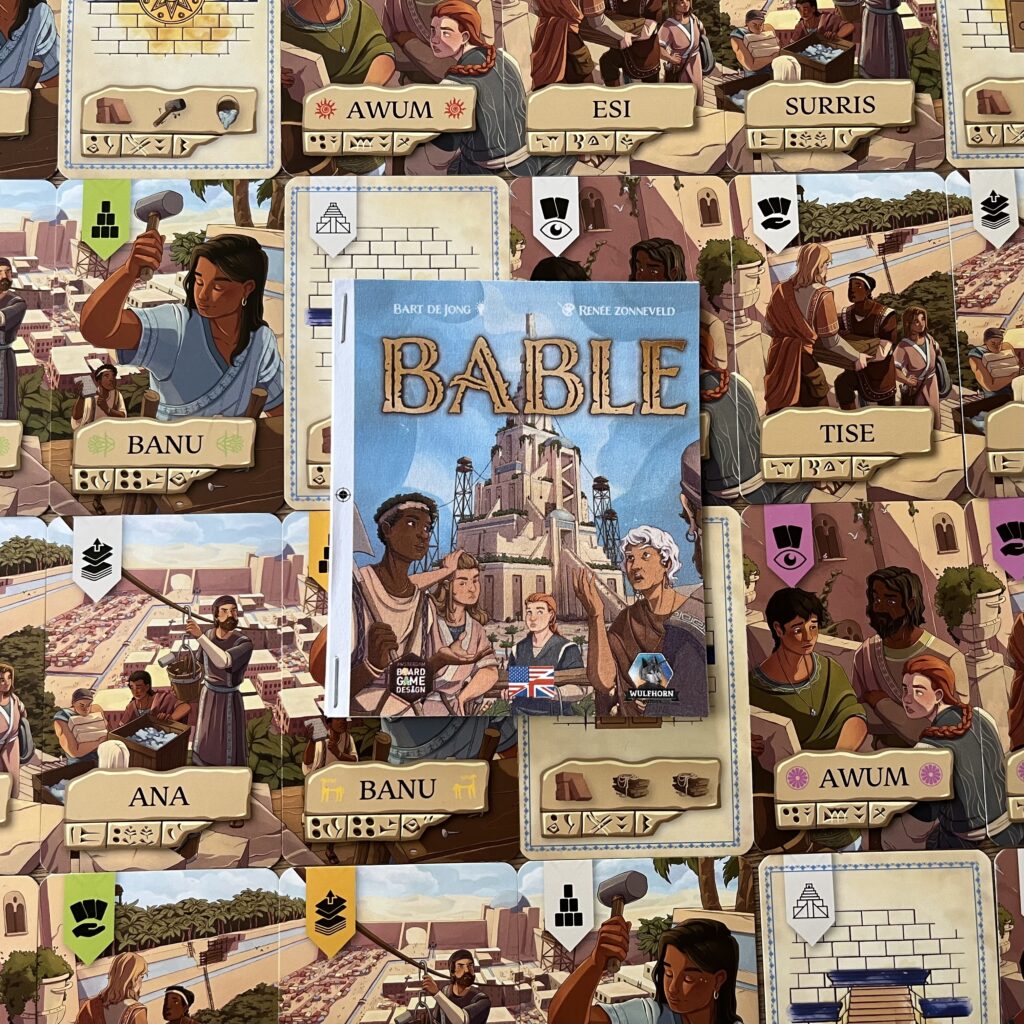
Each turn, the active player performs two actions.The active player may give a command to another player or reveal one of their cards. If the active player chooses to give a command, the active player chooses one of the other players and the active player also names a specific word (the game includes a handy player aid specifically for this). If the chosen player has a card with this word, the player performs the action of the chosen card. There are four possible actions on cards: place a building on a floor by paying resources, take two resource cards, give cards to other players or reveal cards.
The active player may also choose to reveal a card to give information to other players. After the two actions, the two must draw new idea cards.If the pile of cards next to a floor is empty while not enough has been built, players have lost.When players draw a word card, they must replace a card with the same action symbol from their hand with this new card.This changes the words players have in their hand. Buildings players add closed to their supply.So other players do not know what resources a player needs, to build a building.
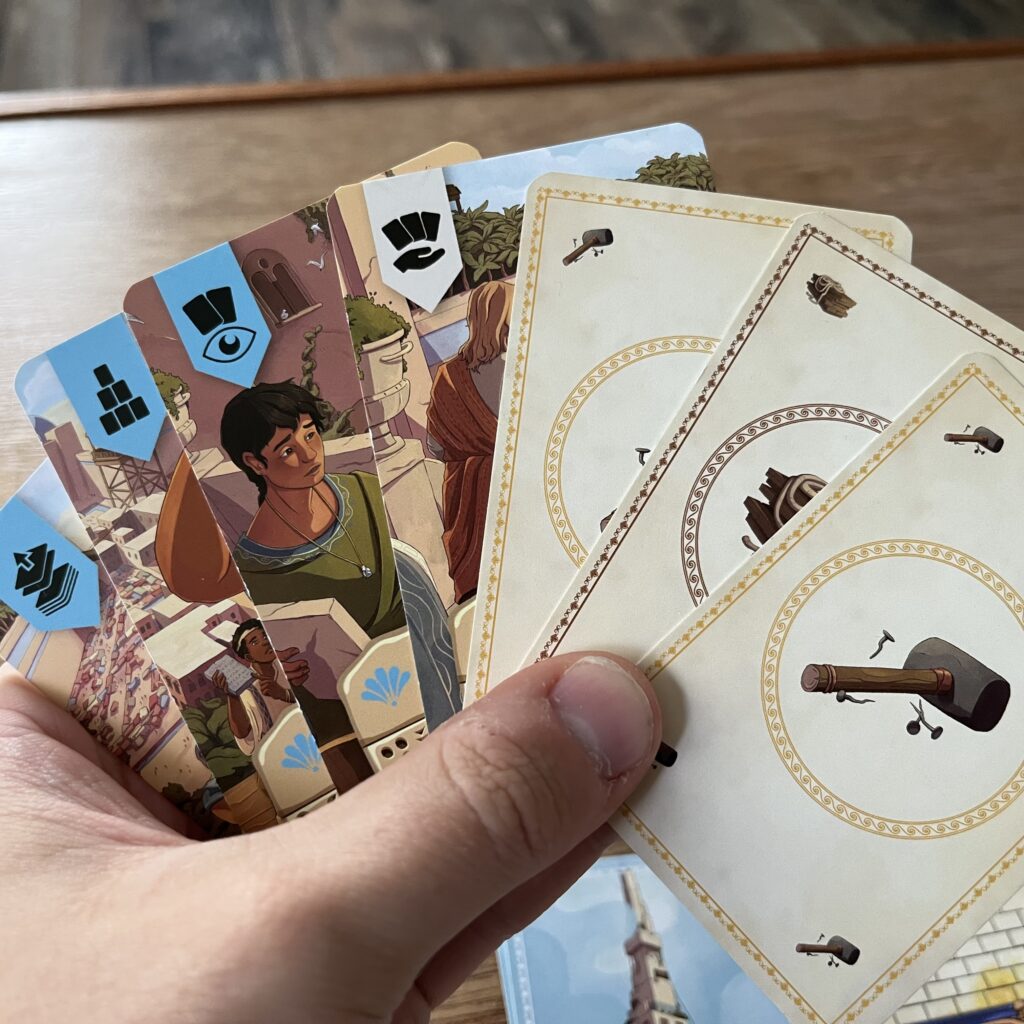
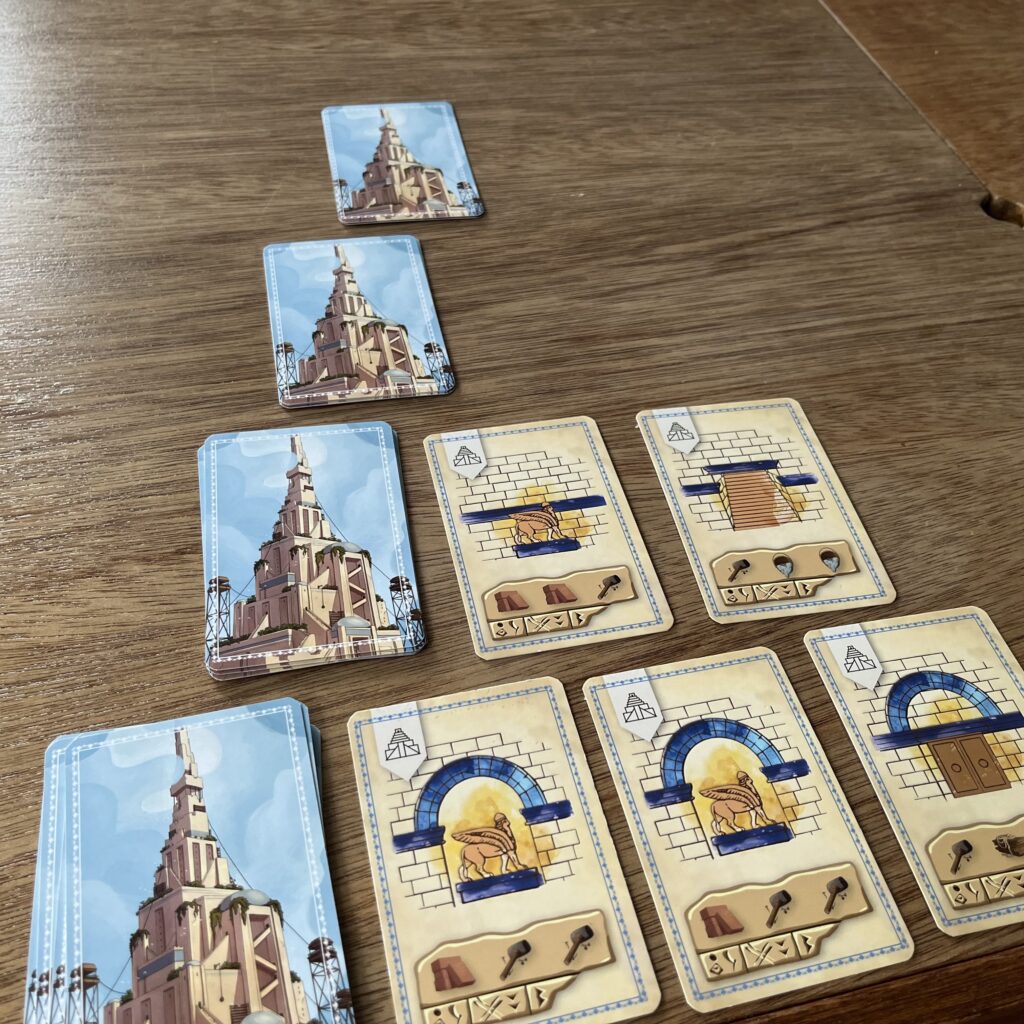
With cooperative games where players are not allowed to communicate, your mind probably drifts to games such as The Mind, but Bable feels particularly innovative to me, and also very unique, in that players must deduce with only limited information what words other players have and what actions these words correspond to. The literal and figurative miscommunication between players also makes the game feel very thematic.



